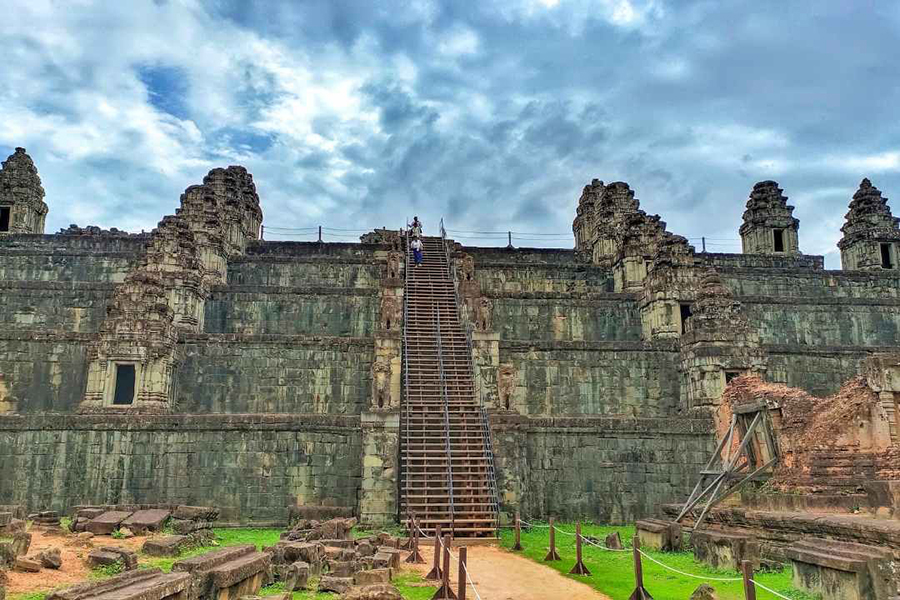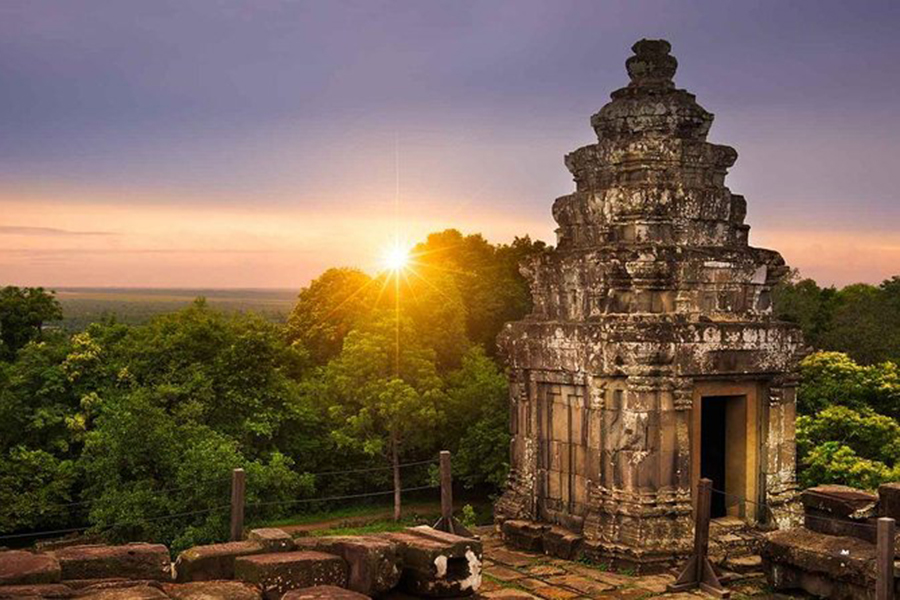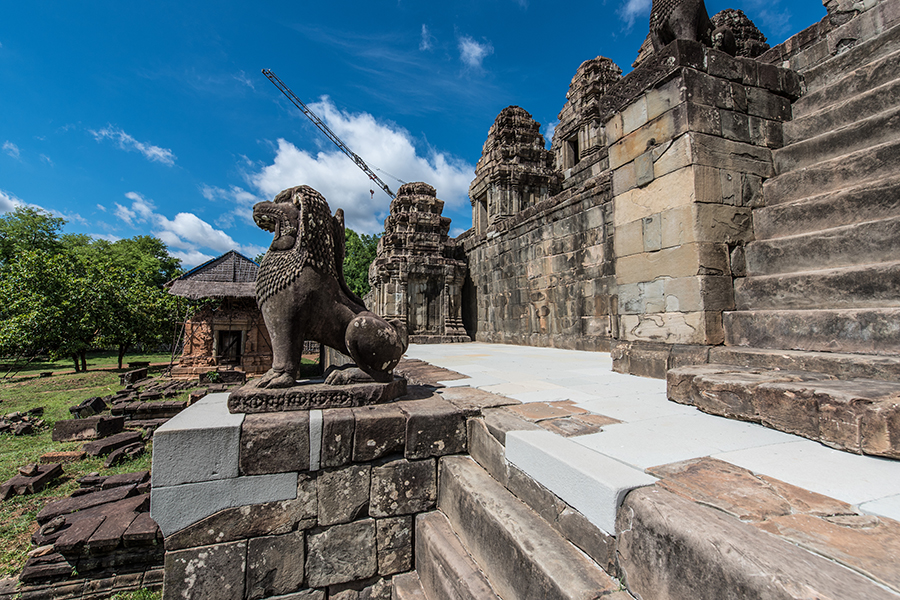Located around 400m south of Angkor Thom, the main attraction at Phnom Bakheng is the sunset view over Angkor Wat. For many years, the whole affair turned into a circus, with crowds of tourists ascending the slopes of the hill and jockeying for space. Numbers are now restricted to just 300 visitors at any one time, so get here early (4pm) to guarantee a sunset spot. The temple, built by Yasovarman I (r 889–910), has five tiers, with seven levels.
Phnom Bakheng lays claim to being home to the first of the temple-mountains built in the vicinity of Angkor. Yasovarman I chose Phnom Bakheng over the Roluos area, where the earlier capital (and temple-mountains) had been located.
At the base are – or were – 44 towers. Each of the five tiers had 12 towers. The summit of the temple has four towers at the cardinal points of the compass as well as a central sanctuary. All of these numbers are of symbolic significance. The seven levels represent the seven Hindu heavens, while the total number of towers, excluding the central sanctuary, is 108, a particularly auspicious number and one that correlates to the lunar calendar.
Some prefer to visit in the early morning, when it’s cool (and crowds are light), to climb the hill. That said, the sunset over the Western Baray is very impressive from here. Allow about two hours for the sunset experience.
To get a decent picture of Angkor Wat in the warm glow of the late-afternoon sun from the summit of Phnom Bakheng, you will need at least a 300mm lens, as the temple is 1.3km away.
Located around 400m south of Angkor Thom, the main attraction at Phnom Bakheng is the sunset view over Angkor Wat. For many years, the whole affair turned into a circus, with crowds of tourists ascending the slopes of the hill and jockeying for space. Numbers are now restricted to just 300 visitors at any one time, so get here early (4pm) to guarantee a sunset spot. The temple, built by Yasovarman I (r 889–910), has five tiers, with seven levels.
Phnom Bakheng lays claim to being home to the first of the temple-mountains built in the vicinity of Angkor. Yasovarman I chose Phnom Bakheng over the Roluos area, where the earlier capital (and temple-mountains) had been located.
At the base are – or were – 44 towers. Each of the five tiers had 12 towers. The summit of the temple has four towers at the cardinal points of the compass as well as a central sanctuary. All of these numbers are of symbolic significance. The seven levels represent the seven Hindu heavens, while the total number of towers, excluding the central sanctuary, is 108, a particularly auspicious number and one that correlates to the lunar calendar.
Some prefer to visit in the early morning, when it’s cool (and crowds are light), to climb the hill. That said, the sunset over the Western Baray is very impressive from here. Allow about two hours for the sunset experience.
To get a decent picture of Angkor Wat in the warm glow of the late-afternoon sun from the summit of Phnom Bakheng, you will need at least a 300mm lens, as the temple is 1.3km away.
Located around 400m south of Angkor Thom, the main attraction at Phnom Bakheng is the sunset view over Angkor Wat. For many years, the whole affair turned into a circus, with crowds of tourists ascending the slopes of the hill and jockeying for space. Numbers are now restricted to just 300 visitors at any one time, so get here early (4pm) to guarantee a sunset spot. The temple, built by Yasovarman I (r 889–910), has five tiers, with seven levels.
Phnom Bakheng lays claim to being home to the first of the temple-mountains built in the vicinity of Angkor. Yasovarman I chose Phnom Bakheng over the Roluos area, where the earlier capital (and temple-mountains) had been located.
At the base are – or were – 44 towers. Each of the five tiers had 12 towers. The summit of the temple has four towers at the cardinal points of the compass as well as a central sanctuary. All of these numbers are of symbolic significance. The seven levels represent the seven Hindu heavens, while the total number of towers, excluding the central sanctuary, is 108, a particularly auspicious number and one that correlates to the lunar calendar.
Some prefer to visit in the early morning, when it’s cool (and crowds are light), to climb the hill. That said, the sunset over the Western Baray is very impressive from here. Allow about two hours for the sunset experience.
To get a decent picture of Angkor Wat in the warm glow of the late-afternoon sun from the summit of Phnom Bakheng, you will need at least a 300mm lens, as the temple is 1.3km away. Viet Vision Holidays



